“Russia has failed in its biggest goals, but those failures may be reversed. Ukraine’s successes are not guaranteed to endure, and at the moment, momentum seems to be shifting at least modestly in Russia’s favor.”
Two years after Russia’s full-scale military invasion of Ukraine, Michael O’Hanlon takes stock of where the war stands and what happens if the U.S. House of Representatives fails to authorize additional financial and military aid.
Related material:
TRANSCRIPT
PITA: Russia’s full-scale military invasion of Ukraine has lasted two full years, as of February 24th. The Ukrainian military and people have shown incredible resilience. Meanwhile, for those not in the trenches, the war has shaken perceptions of European security and continues to reshape NATO and other aspects of U.S.-European security architecture.
As Brookings scholars are taking stock of the current state of the war, several of them took part in a “reality check” on U.S. and European policy, debating some of the major questions facing Ukraine and its supporters. We’ll have a link to the written document in the show notes, or you can also go to brookings.edu slash events to find the live-action version, an online discussion with five of the authors on Friday morning. With us today is one of those authors, Mike O’Hanlon, senior fellow and director of the Strobe Talbot Center for Security, Strategy and Technology here at Brookings. Mike, welcome back.
O’HANLON: Adrianna, thank you. It’s nice to be with you.
PITA: So, one of the questions you and our colleagues addressed was, “is Russia winning?” And I’m going to ask you to dig into that a little bit today. Could you start with giving us a big picture overview of the current situation on the battlefield?
O’HANLON: Well, thank you. And let’s start big picture in time as well as space. Because if we think about two years since the all-out invasion began, and really you were very accurate in saying that was when the all-out attack occurred, but it’s really now 10 years since Russia grabbed Crimea and then started fomenting separatist violence in eastern Ukraine. So, it’s really a decade-long war at this point, at some level. But if we look at it over that two-to-10-year time horizon, Russia is not winning. Because Russia wanted more than Crimea. Russia wanted to invalidate the basic idea of Ukraine as a country and either take it or Lukashenko-ify it. In other words, Lukashenko being the president of Belarus just to the north of Ukraine, widely seen as a Putin lackey and extremely deferential to Russia. At a minimum, Putin wanted one of his own puppets, essentially, in power in Kyiv. And at a maximum, he wanted to take a big chunk or all of the country.
He’s often argued, including in his infamous essay in the summer of 2021, that you can find if you Google Putin, Kremlin, Ukraine essay summer 2021. He’s argued there and elsewhere, like with this Tucker Carlson interview, that Ukraine’s not even a real country, that somehow, its territorial definition and scope and size have fluctuated over the years, which may be true, but there’s still been something called Ukraine for really a millennium. And he’ll say, well, Russia and Ukraine had a common origin in Kyiv, and therefore Kyiv is really more Russian than Ukrainian. Well, it’s true they had a common origin in Kyiv, but I could use that same fact to argue that Russia is not the real country; Russia’s derivative of an original Ukrainian identity and split off from that and later created Moscow.
So, Putin’s arguments are extremely self-serving. And they have tiny kernels of truth, but they’re ridiculous on balance. Problem is Putin believes them, or he certainly is willing to use them and try to get the rest of us to believe that he’s got a right to all of Ukraine, or at least the vast preponderance of it. So, by that standard, he’s failed because he’s only now holding 18% of the country, and he’s stuck. It’s very hard for Russia to make more progress beyond that. And the Western world has remained extremely committed to Ukraine’s survival and President Zelenskyy and his government are still in place. So, I think in these big picture terms, Putin has failed. But unfortunately, he does have 18% of Ukraine. He probably will be able to hold on to that, or most of it, for a very long time to come. He still has the possibility of slowing down the war and then picking it up at a later date and maybe being more successful then. He may find a way to assassinate Zelenskyy or otherwise weaken the government.
And so, I don’t want to say that any success so far by Ukraine is permanent and guaranteed to endure. And in fact, maybe what you were really getting at with your question, in recent weeks, I would say momentum has shifted at least modestly towards Russia’s advantage, as Ukraine, of course, has been denied further American assistance for the moment, has failed in its big 2023 counteroffensive, and has continued to suffer air and missile attacks from Russia, some of which it can shoot down, some of which it can’t. So when you put all that together, Ukraine’s a little bit on its heels, and of course there’s no end in sight, and with Donald Trump running for president of the United States with a long-standing ambivalence or even antipathy against Ukraine, and favorable views towards President Putin, and a promise to all of us that he’ll end the war within a day once he’s in the White House again, with that kind of an attitude coming from the person who currently leads our presidential polls, I think Putin takes some solace in thinking that time is on his side more than it is on Ukraine’s.
So, on balance, Russia has failed in its biggest goals, but those failures may be reversed. Ukraine’s successes are not guaranteed to endure, and at the moment, momentum seems to be shifting at least modestly in Russia’s favor.
PITA: Okay, let me dig into some questions of Russian supply chains, basically. In terms of materiel and arms, in that first year we saw some hopeful signs that the Russian military maybe wasn’t as advanced or sufficiently equipped as had been feared. There was lots of Soviet-era equipment spotted, there were trucks, I think heavy transports that kept being found abandoned because the tires were literally disintegrating under them. But that situation obviously hasn’t continued. What do we know about the current state of Russia’s arms supplies, in terms of their domestic production or what they’re getting from Iran, North Korea, other external sources? What does that look like and how sustainable is that supply?
O’HANLON: Yeah, Russia had a bad year in 2022, but they have recovered. And they figured out how to manufacture what they most need. Four million artillery shells per year, for example, which is roughly twice what the entire Western world can do in aggregate. And as you point out, they’ve also received ballistic missiles and drones from North Korea and Iran. And luckily China’s not providing them weapons. That’s an important point to bear in mind because we are seeing some limits to the China-Russia collaboration so far. And that’s important for a lot of reasons, including how we think about China policy.
But Russia’s got what it needs, and it’s got enough people to man that frontline position and prevent Ukraine from having any particularly successful counteroffensive over the course of the last 12 months. And I think that will remain true into 2024. I don’t see Ukraine having very good prospects of taking back territory this year either, because Russia has manned this 600-mile front pretty well. It’s refitted its forces. It’s called up more people. It’s of course taken prisoners into its military, it’s treated its own people very badly and the estimate is that more than 300,000 Russian soldiers have been killed or wounded in the Ukrainian war in two years, which is a dramatically higher loss rate than they even had in the Afghanistan war of the 1980s So it’s quite deadly and of course Russia does have four times the population base of Ukraine, so unfortunately, even though Russia’s suffering 50% higher casualty rate than Ukraine, Russia can endure that.
And Putin doesn’t feel that he has to slow down the offensives or the fight. He has, as our old colleague, Jung Pak used to say about Kim Jong-Un, Vladimir Putin has a very high tolerance level for other people’s pain, including his own fellow Russians, as long as they’re people from the hinterlands who don’t have political clout and the ability to challenge him in his domestic standing or his upcoming presidential election.
So, Russia’s got what it needs to keep fighting the way it’s fighting. I don’t know if Russia has serious prospects for taking back a lot of Ukraine based on new things militarily they might do. I think Russia’s main hopes for taking more of Ukraine center on American politics, both with the aid bill this year and the looming presidential election in November. But in the meantime, Putin’s not gonna feel he has to slow down, because again, he’s got the core elements of continuing this current fight, and he certainly seems to have the stomach to watch his own and other countries’ soldiers and civilians die and not really seem to care.
PITA: Are there any indications about whether the Russian people share that we don’t care about it so much? Of course, I’m sure the casualty numbers aren’t really being widely published, but are there any indications about how public sentiment is, whether there’s been any change in how they view the war?
O’HANLON: Well, unfortunately, the Russian population, many Russian citizens, are supportive of this war, and there are two main things that Putin’s done to sustain that. One is he tells this fairy tale narrative of how the war started and who the opposition is. And he calls Zelenskyy a Nazi, even though Zelenskyy is Jewish. And he says that it was a war of aggression by NATO, even though Ukraine’s not in NATO, and there are no NATO troops on Ukrainian soil and Ukraine itself of course did not start this war. So, he tells that story and a lot of people believe him or at least parts of it, at least the broader web of conspiracy that the Western world is always encroaching on Russia, and this is a reminder of what happened in the world wars and blah blah blah. So that’s part of his strategy and he does get a fair amount of complicity from many Russians, but he knows not to push his luck.
So, the second part of his strategy is to have most of the human toll that this war exacts on Russia as a society be exacted in those remote regions. Populations that are less well-informed, that are less positioned to object politically to Putin’s rule or to people like prisoners who have nowhere else to go and aren’t regarded well by the rest of society, that he’ll disproportionately tap for his human wave attacks that they’ve been employing so much, including recently in Avdiivka and other places where they’ve had sometimes limited tactical success in the last couple of years, even though they haven’t really netted any great territorial advantage for Russia. The war has been sort of stuck at Russia holding 18 percent of Ukraine for more than a year.
So that’s Putin’s strategy. Tell a fairy tale about who caused the war and why they did so, and then keep the war out of the big cities and the elites. Don’t have it affect them or their families so much. And I’m afraid that strategy is working pretty well.
PITA: Military and financial aid on the scale that Ukraine needs is of course going to require congressional authority from the U.S. However, if the Speaker of the House won’t relent on bringing the current aid package to the floor, and if Republican members aren’t willing to join Democrats in any sort of procedural maneuvers to force the bill to the floor without his approval, is there anything that the Biden administration can do, or maybe already is doing, that does not require congressional approval that will at least keep some small amount of aid and armaments continuing to Ukraine?
O’HANLON: Adrianna, it’s a great question, and I wish I had a better answer for you in terms of an encouraging answer. Because at least Congress hasn’t explicitly cut off aid in the sense of banning it. If Biden were to find some clever way to do what you’re saying, it wouldn’t be like the Iran-Contra scandal of the 1980s, where Congress had said to the Reagan administration, thou shalt not give funds or weapons to the insurgents in Nicaragua. And then the Reagan administration went around them, went around Congress, broke the law, sold weapons to Iran to get cash, to then buy other weapons for the resistance in Nicaragua and just blatantly broke the law. In this case, if you could find some other source of money or weaponry that was sitting around, you might be able to tap into it. But we’ve already more or less run out of that. Biden’s made it clear, and I think rightly so, as president that he would only use official presidential drawdown authority to the extent authorized, and he would be very public about doing that, which means he could tap into American weapon stocks, but only to a certain extent. And Congress would have to effectively authorize even that. And Congress certainly would need to appropriate any money we would give directly to Ukraine, or any money we would use to replenish our own weapon stockpiles by buying more arms from defense industry. So, basically, it’s all been done above the board and by the books, which is to the credit of President Biden and the right way to do it. But unfortunately, that means that when you run out of that explicit authority, you’ve run out. And I suppose he could ask for private donations of money to Ukraine from American citizens. But in terms of selling weaponry, no, I don’t know any other way to do it.
PITA: All right, Mike, thank you very much for your time today. And again, I’ll encourage our listeners to take a look for the full written debate and for the live discussion that you’ll be taking part in.
O’HANLON: Well, thank you very much and also a big shout out to my colleagues and yours who have helped so much with this Ukraine Index project that we’ve built and that has a lot of data on the Brookings website and also in yesterday’s Washington Post under my byline. So, I got to enjoy the primary glory for the work, which was very good work, but it was your colleagues in Communications and mine in Foreign Policy who assembled and presented the data. So, it’s been a nice team effort here at Brookings.
PITA: Wonderful. Thanks very much, Mike.
O’HANLON: Thanks, Adrianna.
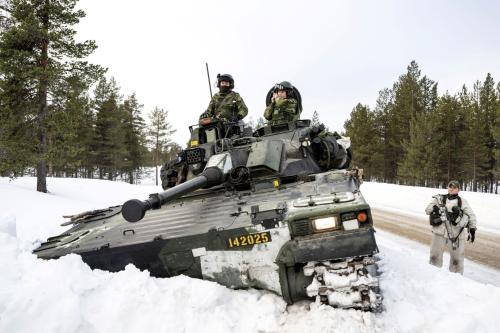
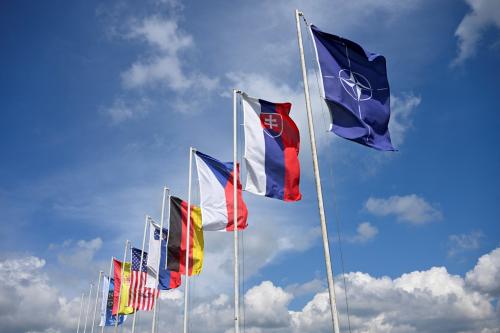
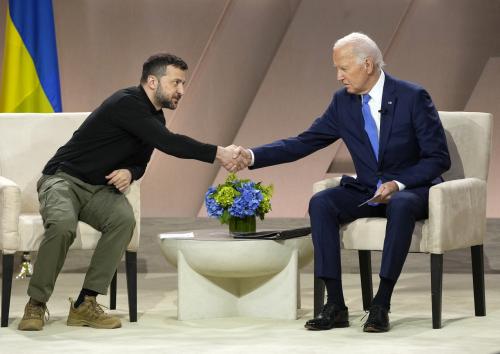
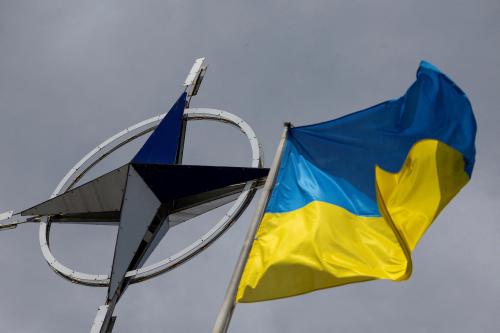
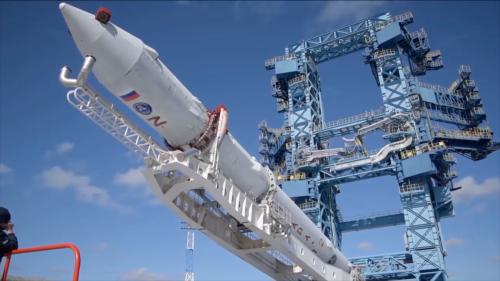
Commentary
PodcastIs Russia winning in Ukraine?
February 23, 2024